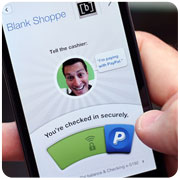
Bronto Software this week released a significant update to its Bronto Marketing Platform: a remarketing engine that helps retailers link online and in-store purchases in order to create targeted email messages that speak to the individual user.
New features allow marketers to collect data such as purchase history and then use that information to segment customers and create email campaigns. They can segment customers by such factors as recency, frequency and even monetary value. They can also create specialized segments — for example, people who buy particular merchandise, say a specific tool.
Segments help marketers create more personalized email messages, even if the same email is delivered to a number of recipients within any given segment.
Feature-Filled Update
“This is new functionality, but it improves upon existing capability that Bronto already had for retargeting,” said Kevin Skurski, director of marketing communications.
“Bronto already included functionality to analyze contact information, create segments and send targeted messages — but it was based on either data that was being captured by Bronto as a result of email campaigns or messages. Now, all order information is available in Bronto for retargeting purposes,” he explained.
“It doesn’t matter if the order came in to a retailer’s e-commerce system or an in-store purchase and had nothing to do with email marketing. Now that information is available, so it’s a huge step in getting a complete picture of your customers and their interests,” Skurski told the E-Commerce Times.
The software update ties offline data to customer records in ways that weren’t available before, thus making new and more relevant communications with customers possible.
“One of the best indicators of future purchases is your previous order data. With order data integrated into our marketing platform, retailers can segment customers based on product categories of purchased items or on value, for example, and create campaigns that speak to their spending and purchasing behaviors, ” said Joe Colopy, CEO of Bronto Software. “This functionality creates new opportunities for automated messaging that converts customers into repeat buyers.”
Amazon is an early adopter of such practices and is often viewed in the industry as the one to beat in terms of managing customer relationships. The recommendation engine, as well as emails sent to users that market for specific products that a customer has searched for or purchased, are ways the online retailer builds its business.
“Although there have been some remarkably innovative approaches in the remarketing space, the genre is in its infancy,” noted Bill Rice, CEO of Kaleidico.
“Amazon is masterful, but there are so many e-commerce platforms and destinations, on and offline, that consumers criss-cross daily that there is significant opportunity for new creative solutions and execution. Amazon will not be alone in leadership for long,” he told the E-Commerce Times.
Targeted Response
Bookseller Shambhala Publications’ early adoption of the Bronto Marketing Platform has allowed the company to look at its customers in several different ways in order to send relevant messages.
Shambala can drill down and send segmented mailings for customers based on book categories or specific authors. The retailer can send a message telling customers of a new or upcoming release, based on previous purchases.
“With Bronto’s order import solution, we target our customers by recency, frequency or value of purchases,” said Leonard Jacobs, COO of Shambhala Publications. “We also segment mailings based on book categories or specific authors that our customers have purchased. Email campaigns based on our past-purchase data greatly outperform our nonsegmented emailings.”
Marketers are able to get data from their messages and learn about cross-channel responses to messaging — say if a consumer should visit a store to make a purchase after viewing a targeted email message.
“If it’s an email campaign, a wealth of metrics are available — including opens, clicks and conversions on that email,” noted Bronto’s Skurski. “With the order import functionality, retailers can now see metrics by those standard response metrics, as well as overall purchases by customer, date of last purchase, frequency of purchase, and value of purchases.”
Savvy use of segmentation helps marketers better target consumers, which can influence future purchases.
“Addressing the right customer at the right time with the right message is fundamental to digital marketing success,” said Kaleidico’s Rice. “These remarketing innovations are literally perfecting our precision in meeting this objective. It’s good for the consumer and good for the marketer — tons of efficiency and ROI to be gained. We always look to optimize our segmentation and targeting to address the consumer in a more relevant and personal way.”
One big challenge that marketers face is how to tie their offline data, such as in-store purchases, with their database. This is often done through VIP and loyalty programs, which help track purchases and can help build a profile based on purchases, interactions and behaviors.
The Bronto solution allows marketers to import their order history to the platform using prebuilt integrations with e-commerce platforms such as Magneto, Demandware and ATG Web Commerce, or JavaScript and API calls for importing data from other sources. Once the integration is fulfilled, data collected from each customer at the time of purchase helps build profiles.
“Through the Bronto API, orders can be imported into Bronto from any system. So, offline purchases that are captured on an in-store POS system can be imported into Bronto,” noted Skurski.
“That way, if a customer who has opted-in to email from a retailer makes a purchase in-store, the retailer can send follow-up marketing based on that purchase,” he said. “Yes, loyalty programs are one example of what can be done with this, but also re-order reminders, VIP programs, and other programs are possible.”
The link to offline data such as in-store purchases is a hurdle to address, but innovative technologies are helping to connect the two channels.
“Today it is challenging, but not impossible,” said Rice. “I feel like the gap is closing quickly. Point of Sale system solution providers realize their customers are demanding this capability, and the data exchange technology is accessible. The hurdle will lower quickly, and it will be a mandatory feature soon. In an era of Big Data, this challenge will become moot in short order.”












































Social Media
See all Social Media